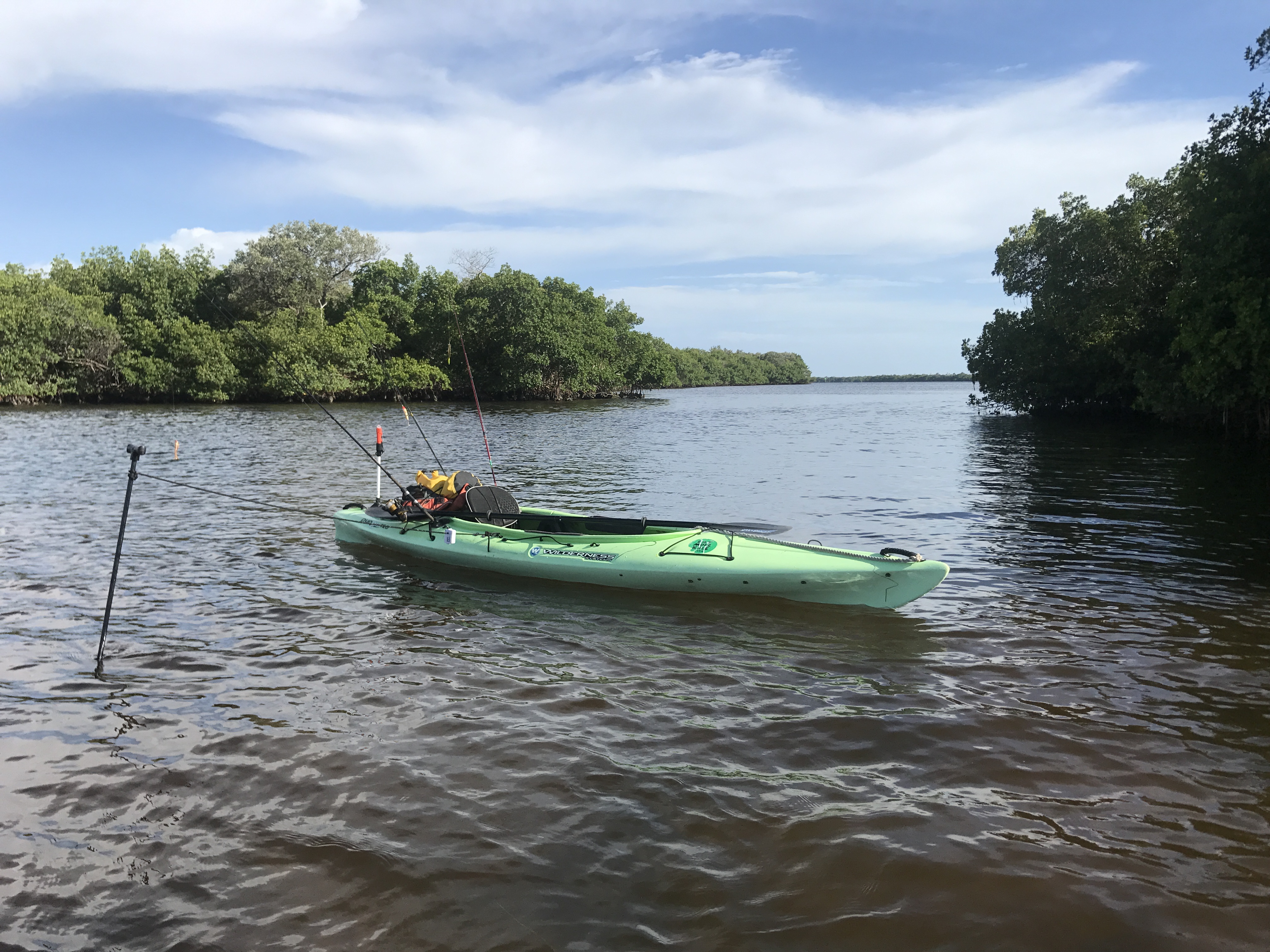Kayak Anchoring, by Dan Carns
Anchoring seems simple enough. You arrive at your favorite spot, grab your anchor and toss it overboard. In truth, anchoring a boat or a kayak is integral to successful fishing.
There are several options available to the kayaker here in S.W. Florida. The most common is the folding grapnel anchor, simple to use but must be used correctly. You need to use the locking ring to hold the arms in place or they will just fold up and ride along the bottom. Beware of the little 1.5 lbs canoe anchors, as the wind and tide will not let this anchor hold, use at least a 3 to 5 lb. size. Next up is the recently available fiberglass stick pin, a simple fiberglass rod with a T handle at the top to push into the soft bottom. It comes in various sizes depending on where you plan to fish, although you will only be able to use it in relatively shallow water (six feet or so). S.W. Florida is home to some amazing shallow water fishing and my five-foot stick pin is the best purchase I’ve made to date for my kayak! A word of advice, tie a foam float to the end of the rope so if it disconnects you will be able to find it in our tannin colored water! Finally, there is a new Mini Power Pole option available that quickly deploys at the touch of a button. Again, this is limited by the depth of the water and you may want to carry both pin style and the folding grapnel anchor.

Keeping in mind that fish love to feed on moving tides and around quickly flowing pinch-points where the water is compressed between islands or oyster bars, in general, fish will be facing into the current and be expecting the bait to be coming from this direction. When anchoring, so as not to spook the fish, consider the distance you need to stay from these spots and how far you can cast, allowing your presentation to use this flowing water. Another thing to master is the point along the side of you kayak that you will use to tie off your anchor. Some kayaks have a trolley system with pulleys that allow you to move the anchor points by simply pulling the rope front to back. My kayak has plastic loop tie-offs on both sides, positioned one third from the front, in the middle of my yak and one third from the back. This gives me the best anchoring options for great hook sets and casting and allows me to change position by simply moving the clip to suit my needs.
The next time you’re out, practice this and focus on how your kayak reacts to the tide and wind and you’ll soon be an expert at anchoring!
It’s a wild world-get out there!
Fishman Dan
Gulf Coast Kayak, 4120 Pine Island Rd NW, Matlacha, FL 33993 Phone: 239-283-1125

